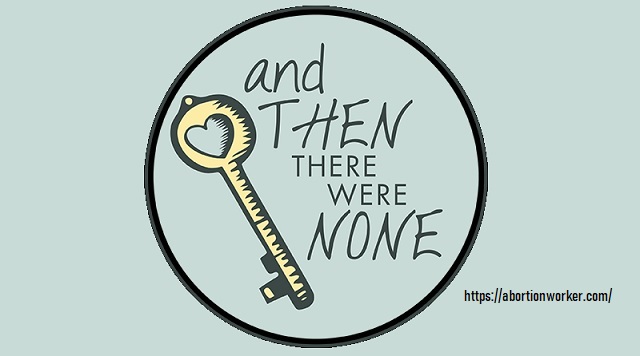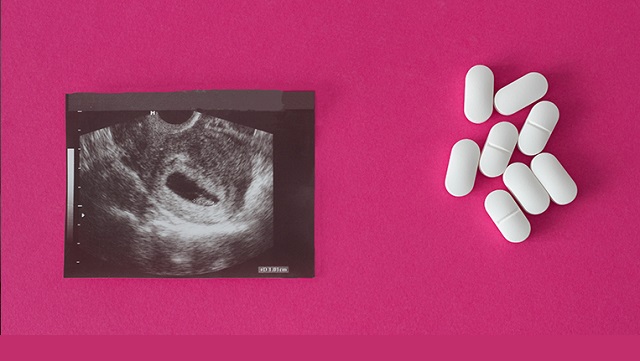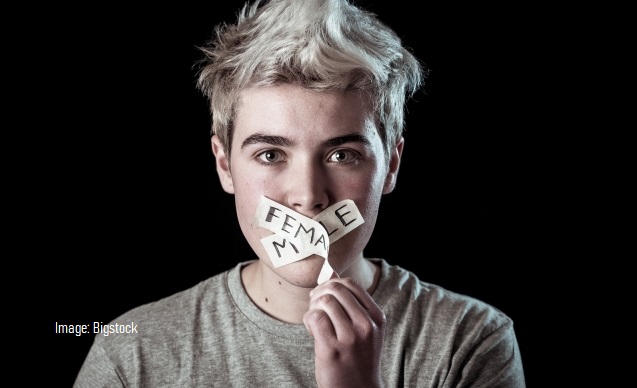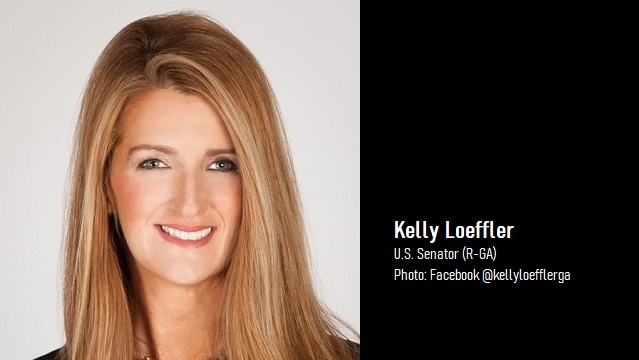The troubling terminations you’ve never heard of. Not all abortions end an unwanted pregnancy, and that makes a difference to the women

Does the termination of an unwanted pregnancy harm women’s mental health? No more than giving birth in such circumstances, according to mainstream social scientists and medical associations. Perhaps. But what about women who terminate a wanted pregnancy?
A new study by sociologist Donald Paul Sullins focuses on this neglected minority – about 1 in 7 of reported abortions in the United States – and finds there is no room for complacency about the effects of abortion among them. In the following interview he talks to MercatorNet about this study, the first of its kind, published in November in the Swiss medical journal Medicina.
Golden Globes award winner Michelle Williams more or less shouted her abortion as a good career move that she does not regret. She has a daughter of 14 and is happily pregnant again at age 39. Isn’t Williams living proof of the therapeutic value of abortion?
Ms. Williams’ declaration is very consistent with the results of my study. The child she aborted clearly was not a wanted pregnancy, and the study found that women who only aborted one or more unwanted pregnancies experienced much lower affective distress (depression, anxiety, suicidality). This is why ignoring wanted pregnancy abortions, acting as if only unwanted pregnancies were ever aborted, tends to understate how much hurt is out there for women after abortion.
There is no question that the chances for advancement in a highly demanding, competitive career often improve by removing inconvenient persons and commitments, whether through divorce, not crediting someone else’s work, character assassination, or– in Michelle Williams’ case — killing an inconveniently conceived child before birth. Civilized people generally do not boast about exercising such brutal career realpolitik, but Ms. Williams probably (let us hope for her sake) does not comprehend the humanity of the unborn life she took.
She has no way of knowing what the acceptance and love of that terminated life, a close reflection of her own being, may have contributed to her own growth in dignity and humanity. For all she knows, her career may have been improved, or maybe her career would have suffered but her life and happiness improved. We have no way of knowing what pain and struggle may lie (lay?) behind her defiant public mask. Why did she feel the need, after announcing her abortion, to reassure her living child of her love for her? Did she sense that her daughter (and we) may wonder?
In the #MeToo era, it is also appropriate to ask who was the father of the child she felt she needed to abort. Would presenting this man with a child after having sexual relations with him have impeded her career? Male sexual exploitation does not end just with hurt feelings or degradation for the woman. Perhaps this was not the case for Ms. Williams, but for every actress who found a pregnancy inconvenient to her career there are probably several men in the film industry who have urged or insisted that she obtain an abortion.
The career obstacle for both men and women of having a child at the wrong time is a mirror image of the career and personal obstructions met by women who refuse to have sex with the right men. Whatever her personal circumstances, Ms. Williams’ statement reflects the typical Hollywood product, in which women’s sexuality exists primarily to service male desire, and women consequently have little agency. As one Hollywood actress (don’t remember who) said of her new boyfriend, voicing a common feeling of young women today, ” I have to give him what he wants, or he will get it somewhere else.”
Even if some women experience mental health problems after an abortion, research seems to show that these are no greater on the whole than those of women who give birth, and that they soon pass away. Have researchers been missing something?
Yes. Both the idea that mental health problems are not increased by abortion and that they are not reduced by childbearing are myths perpetrated by poor research, in this case studies that follow women for only a very short time, some only a few days and often only a few months. So far, every study that has followed women 10 years or longer post-abortion have reported significant mental health problems, compared to women who give birth.
It is important to note that most of this difference is not due to psychological deficits from an abortion but to psychological benefits from having a child. In the Add Health data I studied, childbirth reduced mental health risk by 29% following wanted pregnancies and by 12% even with unwanted pregnancies.
The reasons for this defect in the research, I believe, is that most abortion researchers tend to think of an abortion as a detached clinical event, and do not take into account the way that having an abortion, including making the choice and defending it, alters the life course, relationships and outlook of the woman involved. As I put it in the paper:
“The experience of deciding upon, experiencing, and recovering from the termination of a pregnancy brings many life factors to bear for women, all of which may influence subsequent mental health. For these reasons, it may be more accurate to conceive of an abortion, not as a discrete cause of mental health outcomes (a clinical event), but as one factor in a complex of influences (a life event) that together affect a woman’s level of psychological well-being or distress.”
It seems amazing that yours is the “first study ever” of wanted pregnancy abortions. Surely there is plenty of evidence of them, especially with the increase in terminations for fetal abnormality, and all we hear about #MeToo and domestic violence?
The most influential researchers have simply assumed that only unwanted pregnancies are aborted. Many studies simply define aborted pregnancies as unwanted, even when not preceded by contraception. In 2008 the American Psychological Association (APA) dismissed all wanted pregnancy abortions as due only to fetal abnormality, but (as I show in the study) such abnormalities, even if we could detect them perfectly (we detect only about 60%) and even if all of them were aborted (many are not), could account for only a small proportion of reported wanted pregnancy abortions. When not forced to check a box on a survey, very few women spontaneously describe their aborted child as “unwanted”. There is almost always a level of ambivalence, regret and resignation, that is expressed in complex feelings about the abortion.
It is difficult for OB/GYNs in other countries to understand the sales-like pressure to have an abortion faced by women in American abortion clinics. The movie “Unplanned” does a good job of illustrating this. The abortion rate in the United States has been much higher than in countries where abortions are performed in public hospitals with no profit incentive. A recent study of Utah clinics found that just a three-day waiting period resulted in 8% of women reversing their initial decision to have an abortion.
There have been one or two studies of fetal abnormality abortions, and studies that have looked at all abortions regardless of pregnancy intention have thereby included wanted pregnancy abortions mixed in with all the others, but mine is the first study of all wanted pregnancy abortions as a distinct category.
In your study, what data and measures did you use and what did they reveal about wanted pregnancy abortions? How serious were the effects compared to giving birth or unwanted pregnancy abortions?
The study examined the National Longitudinal Study of Adolescent to Adult Health (Add Health), which followed a representative cohort of 3,935 ever-pregnant U.S. women from age 15 to age 28, gathering data from three successive interviews. I looked at seven psychological disorders which Add Health measured using criteria from the APA’s Diagnostic and Statistical Manual (DSM): depression, suicide ideation, anxiety, and abuse of or addiction to hard drugs, alcohol, opioids or marijuana. Mental health was compared both before and after pregnancy, abortion and birth, and was adjusted for 20 covariates that, my previous research had suggested, account for higher mental health problems, apart from an abortion. These were 1 = childhood physical abuse, 2 = childhood sexual abuse, 3 = childhood verbal abuse, 4 = depression, 5 = anxiety, 6 = suicidal ideation, 7 = alcohol abuse, 8 = drug abuse, 9 = nicotine dependence, 10 = cannabis abuse, 11 = conduct problems in school, 12 = neuroticism, 13 = neighborhood integration, 14 = grade point average (gpa), 15 = ever raped, 16 = relationship satisfaction, 17 = educational attainment, 18 = respondent poverty income, 19 = marital status, and 20 = intimate partner violence.
I found that by age 28, U.S. women who had ever had an abortion of a wanted pregnancy were 84% more likely to experience higher numbers of the seven psychological disorders than were women who had carried all wanted pregnancies to term. Women who had ever aborted any pregnancy were 74% more likely to experience higher psychological disorders compared to those who had given birth.
Experiencing wanted pregnancy abortion led to higher affective distress (depression, anxiety and suicidality) than abortions of unwanted pregnancies, relative to the corresponding births. Risk of these psychological difficulties was only 18% higher following abortion of only unwanted pregnancies, but 69% higher following abortion of one or more wanted pregnancies.
What is the significance of your finding about substance abuse?
I was surprised to find that whether an aborted pregnancy had been wanted or unwanted had no effect on post-abortion rates of substance abuse. Overall, risk of substance abuse (of alcohol, opioids, marijuana, or illegal drugs) was twice as high (elevated 100%) for women following any abortion, but was unaffected by pregnancy intention. Only a few studies have examined the association of abortion and substance abuse; more study is needed to understand what is going on in this area.
My hunch is that pregnancies that may be subject to abortion and substance abuse reflect risk-taking, self-destructive behavior, and their co-occurrence reflects a system of mutually reinforcing moral hazard. I hope to explore this idea in a future study.
What is it about the design of your study that gives you confidence in its findings?
By comparison to cross-sectional studies that only take a snapshot of women at a single point in time, my study is more like a series of pictures that can show changes over time. The exact same women were interviewed at three points in time to determine the effect of their prior pregnancy history on their current mental health. Only a handful of abortion studies have used such rigorous longitudinal designs.
In addition, the Add Health data, funded by a consortium of U.S. federal agencies, are widely acknowledged to be among the most comprehensive and accurate in the world. Response rates and follow-up rates are high (over 80%) and the measures are well-designed and independently validated.
Having said that, it is important to acknowledge that no empirical study can offer definitive proof, and this one is subject to several limitations. Most importantly, every study of abortion using population data is limited by the fact that many abortions are not reported, so we can only talk about the abortions we know of. Since a woman who is more troubled by her abortion is less likely to report it, I think my study probably understates the true level of post-abortion distress for U.S. women. Other limitations are discussed in the study.
No doubt the fact that you are a Catholic priest working in a Catholic university will provoke some prejudice against your research, so it is interesting that studies by secular researchers in Scandinavia and by David Fergusson in New Zealand support your findings. What do their studies show?
Pedersen (studying women in Sweden) and Fergusson found similar problems for women following abortions because they used a similar longitudinal design that followed women for a decade or more after their abortion. Fergusson found that ever-aborting women had 1.4 times higher overall risk (not relative to births) of mental health problems; my study found 1.2 times higher risk.
The similarity has nothing to do with their personal religious or moral convictions about abortion as public policy. Several recent studies from Finland, by scholars who reflect that culture’s uncontroversial acceptance of abortion as reproductive health care, have found similar persistent problems for post-abortion women, such as a doubled risk of suicide, 25% higher overall mortality, and higher emotional distress among women who wanted to give birth. This doesn’t reflect an anti-abortion bias, but just the fact that Finland has excellent health registry population data and is able to follow women’s health for a long time to see the outcomes.
Accusing me of anti-abortion bias because I am Catholic reflects a shallow ignorance of the Catholic enterprise. Many scientists today do not even believe in objective truth, and so cannot imagine someone who does not approach scientific topics with anything more than a narrow ideology to propagate. It is very true that my faith strongly affects my research, but not in the manner critics think. The principles of the Catholic faith, out of which modern science developed, call for faithful scientists to be rigorously objective in their research. Only by looking as hard as I can to find empirical evidence that contradicts the claims of my faith can I then have confidence that any resulting findings which may be consistent with faith-claims have any validity. This process — the logic of the null hypothesis — is not external to the scientific method, but is central to what every scientist should be doing.
There is a great deal of bias in abortion research, but it’s not from the religiously oriented scholars for the most part. The main difference between myself and most scholars who research U.S. abortions is that I am not employed or funded by an abortion provider. Over 90% of U.S. abortion studies have as one or more co-authors a researcher who works for an abortion provider or a research center funded by an abortion provider. Their assertively benign findings about the experience and effects of abortion are highly self-serving and rarely withstand careful scrutiny.
What, so far, has been the response to your latest study from other researchers?
It is too soon to tell much. Friendly researchers I know (most, but not all, opposed to abortion) have written words of appreciation and praise, and invited a couple of lectures to explain the findings further. Pro-life attorneys have been ecstatic. With the study I published a “crosswalk” that addresses some critical responses to a similar earlier study from pro-abortion researchers. I will be interested to see what their eventual responses will be to the measures I took in this study to address those concerns.
COLUMN BY
Rev. Donald Paul Sullins, MDiv., PhD, is a Research Associate Professor of Sociology at The Catholic University of America and Senior Research Associate at The Ruth Institute. He is also Director of the Leo Institute for Catholic Social Research.
Reference: Sullins DP. Affective and Substance Abuse Disorders Following Abortion by Pregnancy Intention in the United States: A Longitudinal Cohort Study. Medicina. 2019 Nov;55(11):741. Available at: https://www.mdpi.com/1010-660X/55/11/741 The article can be freely accessed and reproduced.
RELATED ARTICLES:
Planned Parenthood Sets New Record for Abortions in a Single Year
Why we should respect doctors’ conscientious objections
EDITORS NOTE: This MercatorNet column is republished with permission. © All rights reserved.









 There’s a general assumption in public policy discourse that economic policy and social policy are separate universes.
There’s a general assumption in public policy discourse that economic policy and social policy are separate universes.



